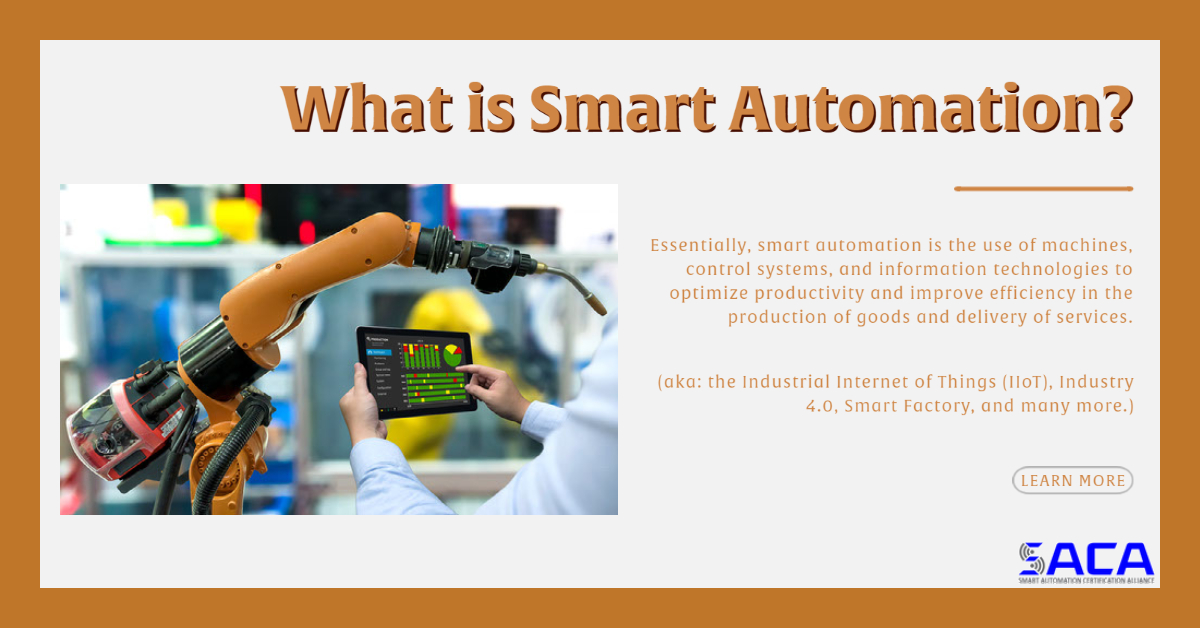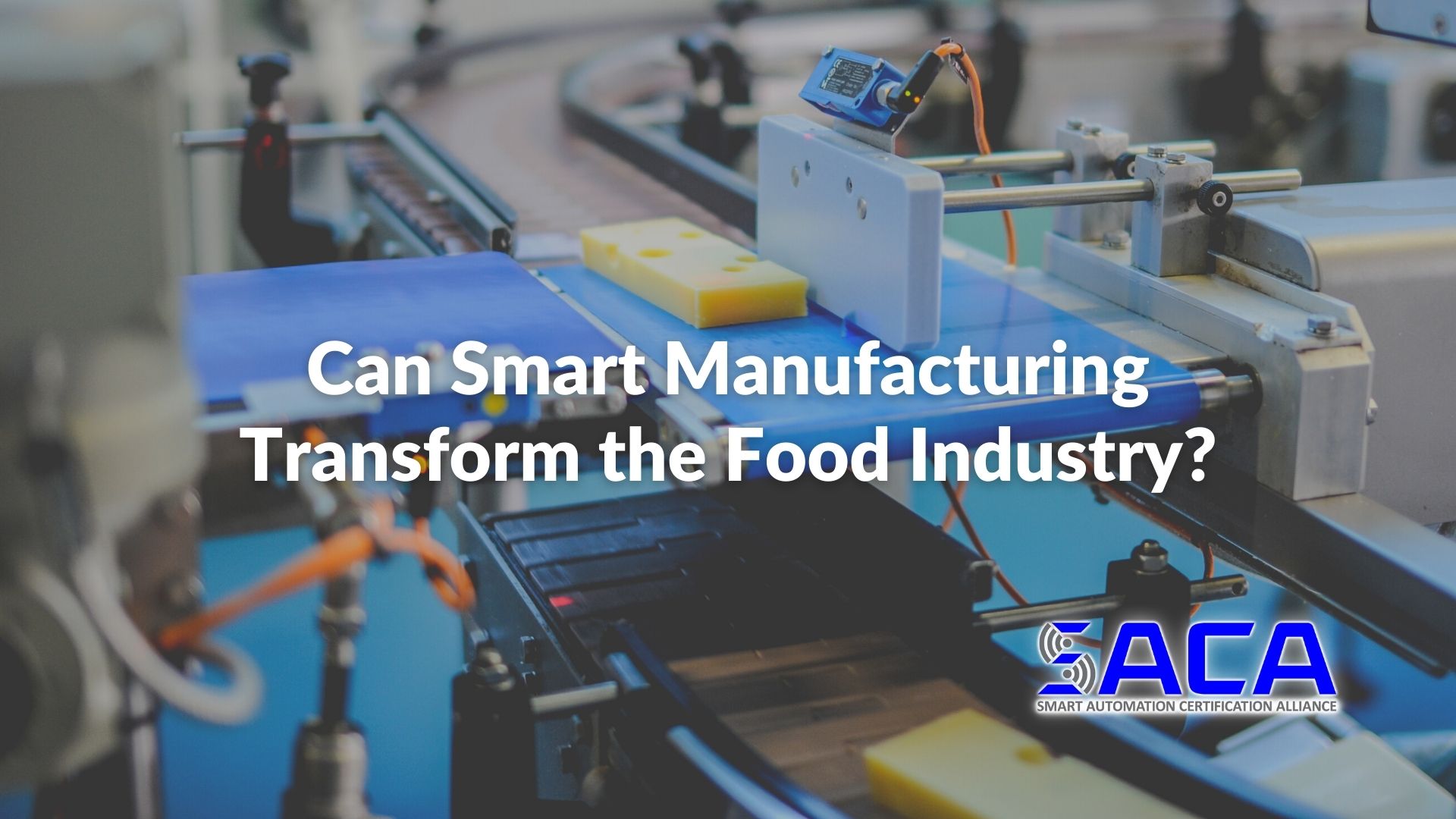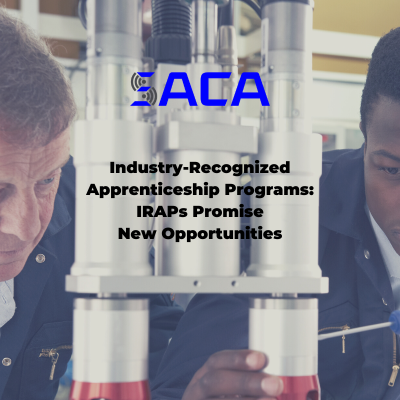Can Smart Manufacturing Transform the Food Industry?
What types of products do you buy online? Today, the answer to that question for many people is just about anything and everything. Things haven’t always been that way, though.
In the earliest days of e-commerce, consumers got their feet wet in the online marketplace purchasing products that were known quantities that could be shipped safely and cheaply. More personal items, such as clothing and shoes, retained a foothold in brick-and-mortar stores where customers could try things on to ensure a good fit.
Fast forward to today and it’s easy to see how drastically e-commerce has changed the retail landscape. Some people now purchase all of their goods exclusively online. There are still certain areas, though, where e-commerce has been slow to gain traction. For example, the food industry has yet to replace a trip to the grocery store with an online experience…until recently.
The COVID-19 pandemic changed much about how we live our lives, including that once-simple trip to the grocery store. Now, more and more people are doing their grocery shopping online or via a smartphone app and having their groceries delivered directly to their car at the store.
As a result, the food industry finds itself in need of a transformation to respond to changing realities driven by consumer demand. Experts believe that transformation will come through a variety of new smart manufacturing technologies.
Consumer Demand Driving Changes
When the COVID-19 pandemic began in early 2020, no one fully understood the ways in which our lives would change over the course of the coming months. Routine, everyday tasks, such as shopping for groceries, were suddenly fraught with the potential for exposure to the deadly virus.
Retail grocers were faced with simultaneously managing intense supply chain disruptions that left many shelves bare and customers who wanted as little contact with other shoppers as possible. The solution for many was to pair online shopping (often via an app) with curbside delivery.
Shopping for food online was a new experience for most customers. It didn’t take long, however, for most people to figure out that they could compare prices across various stores just like they would for any other online purchase.
The effect of these changes on the food industry has been significant. As author Katy Askew notes in a recent FoodNavigator article, the food industry is being forced “to rapidly adapt their processes and products to keep up with changing markets” resulting from “elevated consumer expectations.”
Smart Manufacturing to the Rescue
How can food and beverage companies keep up with these rapid changes? Askew spoke with Andrew Smith, Regional Segment Leader – Process & Packaging OEMs at Rockwell Automation, which recently became a Platinum Member of the Smart Automation Certification Alliance (SACA).
According to Smith, “To remain competitive, food and beverage manufacturing systems must optimize productivity and perform at the highest standard. This requires comprehensive and continuous operations improvement.” Increasingly, the food industry is turning to smart manufacturing to achieve those goals.
Smith believes in the potential of smart manufacturing:
“Connected, information-enabled manufacturing – or smart manufacturing – can make all the difference. New technologies are helping food and beverage manufacturers better understand and use their food processing operations. Smart manufacturing can help improve asset utilization, increase yield, drive workforce productivity, optimize resource management, and mitigate security risks.”
Not convinced yet? Smith points to Hillshire Brands as a prime example of what smart manufacturing can do. After the company began using a manufacturing intelligence system at a Texas plant, “the food manufacturer reduced inedible product and waste goals to 0.8% – saving about 5.5 million corn dogs per year.”
Technologies Changing the Game
The impact of smart technologies is not lost on the average person today. Whether it’s the smartphone in your hand or the smart thermostat keeping your home the perfect temperature, nearly every aspect of life has been impacted by advances in technology
Modern manufacturers are no exception, including food and beverage companies. According to Smith, “New developments in technology are redefining food and beverage manufacturing. By combining the Internet of Things, wireless and mobile technologies, data analytics, and network infrastructure, companies can access and act on the data from their operations before a potential problem arises.”
Askew notes in her article that Smith identified five advanced technologies he believes will drive greater adoption of smart manufacturing technologies in the food industry:
Flexible Manufacturing
Flexible manufacturing focuses on how quickly a company can adapt to change. As Matt Graves and Rachel Wilson explain in an article on the Rockwell Automation blog, “It’s about creating a seamless flow from need to delivery. True flexibility empowers manufacturers to stay in tune with their market, by replacing rigid and static operating models with levels of control and responsiveness never previously thought possible.”
When it comes to integrating new technologies, though, the authors stress that companies must not forget about the people using those technologies:
“When it comes to embracing Industry 4.0, integration between departments is key. While new technology can bring data and systems together, getting your people to communicate/collaborate is just as important – and absolutely essential if you want to gain the maximum return on investment.”
Augmented Reality
As Askew notes in her article, “Augmented reality (AR) is a technology that allows users to view and interact with real-world environments through computer generated superimposed images. It enables workers to perform better and avoid safety and compliance risks by providing easy access to the information they need online.”
In smart manufacturing, companies use AR to help technicians troubleshoot problems in real time. For example, maintenance personnel can use an AR app on a smartphone or tablet to zero in on exactly what component of a machine may be malfunctioning and develop a solution more quickly, thereby reducing equipment downtime.
Predictive Maintenance
The heart of smart manufacturing is the collection, processing, analysis, and application of the tremendous amounts of data (sometimes called “big data”) generated by the production process. According to Askew, companies will use “powerful machine learning algorithms and predictive analytics software to offer predictive and prescriptive maintenance.”
Practically, this means that machines equipped with smart sensors can monitor their own performance. Technicians will receive alerts from machines when maintenance needs are imminent, allowing them to maintain and repair equipment before breakdowns occur, thereby reducing downtime and increasing productivity.
Edge Computing
A Rockwell Automation article explains edge computing in this way:
“Edge computing combines a machine’s control and computing hardware into one platform, either with a controller that has a built-in computer or with a computing module that sits on the same rack as the controller. With this two-in-one approach, you can put all your machine’s digital content — such as custom code, the controller’s human-machine interface (HMI) application and any third-party software programs — right where the controller resides, rather than in another location. This creates inherent benefits for end users, including space savings and access to data right at its source. But it also creates new opportunities for you to build entirely new solutions for production applications.”
According to Askew, “Edge computing will complement existing cloud infrastructure by enabling real-time data processing where work is done (for example, motors, pumps, generators, or other sensors). Implementing integrated analytics from the edge to the cloud will help these companies maximize the value of investments in digital systems.”
Digital Twin/Digital Thread
In addition to augmented reality apps, companies are also using advanced digital tools to assist with troubleshooting, such as digital twins and the Digital Thread. According to Askew, a digital twin is “the collection of data created in software representing a real-life system. Machines, controllers, processes, workflow, and any other aspect of a system can be represented digitally, without any interruption to ongoing activities.”
Similar to a digital twin, the Digital Thread “creates a virtual representation of how data travels within a company. The Digital Thread enables supervisory enhancements throughout the supply chain, including delivery of work instructions to operators, quality control sampling, and automated activation of components and materials from vendors, suppliers, and partners”
What can these technologies do for the food industry? Askew paints an interesting view of a future that’s probably a lot closer than we think:
“In the near future, we will see that by interconnecting business systems through the Digital Thread, companies will practically start up new production lines. Using the digital twins, manufacturers will run machines virtually before parts are ordered, discover control issues before support personnel review them, predict future performance challenges and opportunities, simulate line changes to stay keep up with changing customer demands, and will train new staff in non-stop systems of activity.”
SACA Certifications Validate Industry 4.0 Skills
Employees in the food and beverage industry would do well to complement their current skillset with advanced Industry 4.0 skills that will help them change and grow with advances in technology. For those workers wanting to specialize in Industry 4.0 technologies, the certifications offered by the Smart Automation Certification Alliance are a great place to start. SACA offers industry-standard certifications that focus on “connected systems” skills. To learn more about the different types of SACA certifications, visit SACA online.
- Published in News
Helpful tips on how to build a smart automation résumé
To view a multimedia version of ‘Helpful tips on how to build a smart automation résumé‘, please click here.
New year, new you – right?
With the end of 2020 approaching quickly, many are circling Jan. 1, 2021 as an opportunity to improve their happiness and wellbeing. For some, that signals a career change – a way to improve on their daily professional grind.
While COVID-19 has made the job market volatile, there are still careers out there with jobs waiting for people to apply for them. And some of those jobs happen to fall into a sector known as Smart Automation.
What is Smart Automation?

While some know the term as “smart automation”, it goes by many different monikers: the Industrial Internet of Things (IIoT), Industry 4.0, Smart Factory, and many more.
Essentially, smart automation is the use of machines, control systems, and information technologies to optimize productivity and improve efficiency in the production of goods and delivery of services. From building automobiles to sewing buttons on a shirt, it is used all around the world to improve the speed and quality of manufacturing. However, what makes the automation “smart” is a lot like the same idea used when describing smartphones: we are connecting to the Internet of Things (IoT), which allows devices to communicate with other devices via the Internet.
This has ushered in a brand new way of manufacturing, which many are viewing as the Fourth Industrial Revolution – which explains the name Industry 4.0. Smart automation holds the potential for a massive impact on industrial efficiency and proficiency. By combining cyber-physical systems, automation, and the Internet of Things, companies can begin to create a smart factory environment, which could include a team of robots communicating with each other (and human workers) to report on a wide variety of information, such as cycle times, mechanical breakdowns, predictive maintenance, and more.
Why should I be interested in a career in Smart Automation?
While the real boost behind smart automation involves robots and self-driving vehicles, it does not leave human workers out in the cold. As an increase in usage of robots happens, low-skill assembly line-type jobs will begin to fade out, making ways for new careers that have never existed before.
The demand for these highly-skilled workers that can program, analyze, and maintain many parts of these complex systems is so tremendous that companies are having difficulty finding candidates to accept these careers in manufacturing, which has led to a sector-wide hiring struggle, known as the Skills Gap. This means these jobs – many of which are high-paying – are going unfilled due to the lack of qualified workers.
But smart automation doesn’t just live on an assembly line floor. In fact, thanks to the use of smart sensors, smart devices, and other new cutting-edge technologies, which possess the ability to create an enormous amount of data to be monitored and shared via cloud technology, many of the jobs available today require just as much knowledge on IT and cyber-security as any other typical manufacturing skill.
How do I build a résumé for jobs that don’t exist?
Like most jobs, you don’t pick a career by simply liking its name or title: you pick your career based on the skills that you’re good at, or enjoy doing. So with that in mind, here are four tips on how you can improve your smart automation résumé:

Tip #1: Spotlight on your “smart” skillset
By highlighting your “smart” skills – and highly-coveted personal skills like problem solving, critical thinking, and others – as opposed to a particular job’s title, you will be more adept to finding the ideal job for your skillset.
So when constructing your résumé, put an emphasis on your “smart” skillset that showcases you have the specific knowledge and know-how for the skills they are looking for. According to a recent study by Deloitte, many of the future jobs will revolve around these skills:

Tip #2: Include a focused professional summary statement
When introducing yourself through your résumé’s Professional Summary section, include any pertinent industry-needed skills that were called out in the company’s job listing. (Called “value proposition”, highlighting a collection of skills you can provide curated to a particular business or position makes you a more attractive candidate in the process.)
Be straightforward in explaining your skillset, and what you can offer this specific company. Not only will it showcase your most important attributes as early in the review process as possible, but it will also prove to the company that you took the time to study the job listing, not just submitting résumés blindly without reading.
Also, focus on strong character traits that prove your experience, and back it up with accomplishments. Remember to show, not just tell, examples of how you can improve their bottom line. If warranted, consider a compelling statement that describes your current (or previous) profession, especially if they include the “buzzword” skills a company is specifically looking for.

Tip #3: Don’t overlook your training – it matters!
Whether it’s your first career in industry, or you’re retooling for a future position or promotion, training in smart automation matters. From the bedrock knowledge of automation, to understanding all of the safety protocols around these automated machines, having industry-relevant training is critical for positions like these.
So when compiling your previous academic or professional experience, make sure to list any related classroom experience, as well as specific courses that pertain to the position you’re applying for – remembering to focus on your skillset.
If it applies to you, consider adding any apprenticeships, mentorships, or other non-traditional means of training. Don’t overlook any of your training, no matter how menial you might think it is.

Tip #4: Certifications can make (or break) your job search
Let’s be honest here: if Candidate A and Candidate B both have similar skillsets, experience, and recommendations – but only one of them holds an industry-recognized Industry 4.0 certification – it should be pretty clear who is going to get the first job offer.
Most Industry 4.0 or Smart Certifications can showcase to businesses that you are trained under the standard guidelines established by industry leaders. In fact, most companies will prioritize candidates that hold an official industrial certification from an industry-recognized institute, like SACA, for example.
Since these certifications play such a crucial role in the hiring process, consider upping your training regime to include industry-recognized smart credentials.
Getting involved with Industry 4.0 is a “smart” bet
In summary, it’s simple: Industry 4.0 jobs are aplenty, high-paying, and there for the taking.
But they’re not for everybody. These jobs take a specific skillset that rely heavily upon critical thinking and problem-solving. The challenges, though, should not dissuade someone from pursuing a career in smart automation. Instead, it highlights the pressing need for qualified workers in this field of work, and the unlimited possibilities these positions could bring to a world of “smart” manufacturing.
- Published in News
Industry-Recognized Apprenticeship Programs: IRAPs Promise New Opportunities
LOUISVILLE, KY—OCTOBER 14, 2020
Industries across the United States have been struggling for years to fill open positions with qualified workers. Despite widespread recognition of the problems industries face, the skills gap has continued to widen.
Rather than bringing new solutions, 2020 instead saw a global pandemic make an already-tough jobs situation worse. Due to the COVID-19 crisis, millions of American workers have lost their jobs, many of them permanently.
As the U.S. seeks to recover from “the most devastating economic crisis since the Great Depression,” there is no shortage of problems that must be addressed and solutions that need to be formulated. How effective those solutions are will dictate the speed and scope of economic recovery.
Unlike past economic recovery initiatives that often pushed people toward college degrees, experts believe that our current economic recovery from the COVID-19 Recession must instead focus on practical skill development for jobs industries need. To that end, community colleges and skills training may play a critical role.
Another potential solution with a proven track record of success is apprenticeship. In fact, many believe new industry-recognized apprenticeship programs (IRAPs) will provide fresh opportunities for both American workers and industries that desperately need skilled talent. How? IRAPs will expand the use of the apprenticeship model to industries that haven’t used it or have underutilized it in the past.
What Are IRAPs?
So what exactly are IRAPs anyway? According to the U.S. Department of Labor’s (DOL) Apprenticeship.gov website:
“Industry-Recognized Apprenticeship Programs are high-quality apprenticeship programs recognized as such by a Standards Recognition Entity (SRE) pursuant to the DOL’s standards. These programs provide individuals with opportunities to obtain workplace-relevant knowledge and progressively advancing skills. IRAPs include a paid-work component and an educational component and result in an industry-recognized credential. An IRAP is developed or delivered by entities such as trade and industry groups, corporations, non-profit organizations, educational institutions, unions, and joint labor-management organizations.”
For example, the Smart Automation Certification Alliance (SACA) was recognized as one of 18 initial organizations designated as an SRE by the DOL on September 23, 2020. SACA may now evaluate and recognize IRAPs consistent with DOL standards.
What are those standards? According to the DOL’s IRAP Fact Sheet, high-quality IRAPs must meet the following 10 requirements:
- Paid Work
- Written Training Plan
- Written Apprenticeship Agreement
- Specialized Knowledge and Experience
- Safety
- Equal Employment Opportunity
- Credit for Prior Knowledge
- Mentorship
- Industry-Recognized Credentials
- Disclosure of Costs and Fees.
When Were IRAPs Created?
IRAPs are a relatively-new solution in the area of workforce development. Their history can be traced back to June 15, 2017, when President Trump issued an Executive Order to Expand Apprenticeships in America.
According to a DOL press release, the order established the 20-member Task Force on Apprenticeship Expansion, which was “headed by the Secretary of Labor and co-chaired by the Secretaries of Commerce and Education.”
The DOL’s IRAP Fact Sheet notes that the president’s order “directed the Secretary to consider proposing regulations that promote the development of apprenticeship programs by third parties…especially in sectors where apprenticeship programs are insufficient.”
The Task Force subsequently recommended the establishment of IRAPs in May 2018. Eventually, as the IRAP Fact Sheet notes:
“To address America’s skills gap and to rapidly increase the availability of high-quality apprenticeship programs in sectors where apprenticeship opportunities are not widespread, the [DOL] has issued a Final Rule that establishes a system for advancing the development of high-quality IRAPs.”
IRAPs then became official when new regulations took effect on May 11, 2020.
How Do IRAPs Differ from Traditional Apprenticeships?
According to a recent Forbes article by Ryan Craig:
“For years, policy makers have struggled with the question of how to expand apprenticeships from traditional blue collar building and industrial trades to fast-growing sectors like technology, healthcare, and professional services. On a per capita basis, the U.S. is far behind other nations: Germany has nearly 20x as many apprentices, and the UK has 14x.”
Craig further notes that the goal of IRAPs is:
“to increase the number of actual American apprentices from 500,000 to 5 million by decentralizing apprenticeship authority from the DOL to hundreds of third party IRAP authorizers [SREs]…The expectation is that while DOL registered apprenticeships are infamous for the amount of paperwork required, IRAPs will be much less onerous and therefore more popular.”
Rather than taking apprenticeships in an entirely new direction, IRAPS are “intended to run in tandem with the department’s long-established registered apprenticeship program,” according to an article from the Community College Daily website. Indeed, the DOL’s IRAP FAQ clearly notes:
“IRAPs and RAPs [Registered Apprenticeship Programs] will work on parallel tracks with the support of the Department. The Registered Apprenticeship system has produced successful results in many industries for over 80 years and it will continue to do so. The industry-led, market-driven approach outlined in the IRAP final rule will give employers and other stakeholders the additional flexibility necessary to expand the apprenticeship model into new industries where registered programs are less prevalent and to address the diverse workforce needs of different industries and occupations. IRAPs provide a new apprenticeship pathway that lets industry organizations take the lead in identifying high-quality apprenticeship programs and opportunities based on the needs in their industry.”
Consistent with the goal of expanding the apprenticeship model to new industries, one notable difference between IRAPs and RAPs is that SREs are prohibited from recognizing IRAPs in the construction industry. According to article by Katie Spiker from the National Skills Coalition:
“This carve out was…the subject of a massive campaign by the building trades unions…According to proponents of the construction industry exclusion, and the Department in their justification of excluding construction in the final IRAP rule, the fact that the majority of U.S. apprenticeships are in the construction industry is evidence the model is effective for the industry and that expanding IRAPs to construction is not necessary to meet the goal of expanding apprenticeships in the U.S.”
Who Will Benefit from IRAPs?
The DOL clearly outlines a set of expected benefits to both workers and businesses in its IRAP Fact Sheet. For businesses, the DOL expects IRAPs to:
- provide an additional pathway to assist career seekers and job creators;
- serve the needs of business by expanding apprenticeships across more industries;
- use innovative, industry-driven approaches to scale a proven workforce education model;
- allow more flexibility to design apprenticeship programs that meet business needs; and
- supply an immediate pool of workers for today and skilled talent for tomorrow.
For workers, IRAPs are expected to:
- offer opportunities to earn and learn, while obtaining valuable, portable, industry-recognized, competency-based credentials;
- provide training in standards that are developed by the industry, ensuring an apprentice develops the skillset needed for career success;
- increase the opportunities for apprenticeship programs across all sectors in the economy; and
- provide an alternative to college for finding career success that allows workers to obtain high paying jobs without going into debt.
Katie Spiker echoes the view that both workers and businesses should benefit from IRAPs: “The IRAP initiative is evidence of the need to modernize apprenticeship, expand access to workers to earn industry-recognized credentials and allow businesses to play more of a role in helping tailor the kind of training their workers receive to meet their specific needs.”
While traditional registered apprenticeship programs have been successful for years, Roy Maurer notes in a recent article for SHRM, the Society for Human Resource Management, that “only about 0.2 percent of the U.S. workforce has taken advantage of the programs, primarily in trades and construction.” The DOL believes IRAPs “will effectively expand apprenticeship in telecommunications, health care, cybersecurity and other sectors where it’s currently not widely used.”
Rachel Greszler, senior policy analyst at The Heritage Foundation, believes the benefits to workers are clear:
“The [IRAPs] rule is an important step in opening up more nontraditional and affordable education opportunities that could particularly benefit younger Americans who have been left behind by America’s higher-education system, as well as current workers who have been negatively impacted by changes in industry and technology. It’s not in everyone’s best interest to pursue an expensive four-year college education, and these types of apprenticeships make it possible for individuals to obtain the education they need for a promising career without taking on debt, and instead, actually being paid in the process.”
As U.S. Labor Secretary Eugene Scalia summarized in a DOL press release:
“As workers seek to reenter the workforce following the economic disruption caused by coronavirus, [IRAPs] and the SREs that recognize them will provide new opportunities for Americans to earn a living while learning the skills needed in a changing job market.”
Where Can I Learn More About IRAPs?
According to Ryan Craig:
“There are millions of unemployed workers whose jobs are unlikely to return once the pandemic subsides. So one of the most important policy questions in America today is how they’ll find paths back to work…If there is an answer, apprenticeships will almost certainly play a leading role.”
If you want to learn more about IRAPs and the SREs who will be helping to bring them to life, be sure to check out the DOL’s Apprenticeship.gov website. The latest information and developments will be posted there as IRAPs take shape and begin to fulfill the goal of expanding apprenticeships into new industries while helping workers gain new skills.
- Published in News
SACA Announces Special Membership Rates Due to COVID-19
In an effort to ease some of the burden on school administrators and provide students an opportunity for valuable certifications, the Smart Automation Certification Alliance – a non-profit organization better known as SACA – is offering a special membership price for high schools and colleges to develop and deploy modular Industry 4.0 certifications for a wide range of industries.
From now until Dec. 31, 2020, SACA membership will be available for a special rate to help educational institutes during these difficult times.
- Colleges: A year-long membership for colleges will run $1,750, down from its normal $2,500/year price.
- High Schools: Year-long high school memberships will cost $375, down from its typical $500 annual cost.
Schools will have the option of buying up to three years of membership at this price. Memberships run for 12 months from the time of payment, and this special pricing will not be available in 2021.
Education Member Benefits include:
- Unlimited, free certifications to individuals enrolled as students of the member institution;
- Access to all SACA assessment materials;
- Discounted instructor/administrator training;
- Access to news of latest developments in Industry 4.0 technology, education, and certification;
- Authorization to advertise as a SACA Certification Site;
- Eligible to be profiled by SACA in its communications and advertising;
- Discounted registration fees for SACA Conferences; and
- Eligible to be a member of SACA Education Advisory Panel.
All SACA certifications, which can be attained both in-person and virtually, are available on two levels: Silver and Gold.
SACA Silver Certifications: This certification, which is ideal for distance learning, is awarded to candidates who successfully pass the written knowledge exam. These exams are delivered online through the SACA testing portal. Once the candidate is ready to take the certification test, the proctor logs into the SACA site and clicks the online proctor button. The candidate will then remotely access the certification test.
Silver Certification is ideal for those individuals who are seeking to validate online core achievement or when hands-on testing is not available.
SACA Gold Certifications: This certification is awarded to candidates that successfully pass the written knowledge exam and successfully complete the hands-on performance assessments on approved equipment. Once the skills are demonstrated correctly and reported by the proctor, the candidate is eligible to receive the full Gold certification.
Who Is SACA?
SACA’s vision is to provide highly affordable, accessible certifications that significantly increase the number of individuals who possess the skills represented by these credentials, thereby ensuring that companies have the highly skilled workers they need, and individuals are prepared to be successful in an Industry 4.0 world.
Why Choose SACA?
For schools that choose to become a member of SACA, certification opportunities will be aplenty for students. Not only are SACA certifications industry-driven, and developed for industry by industry, but they are also developed through a rigorous process that begins with the creation of truly international skill standards, endorsed by leading experts in Industry 4.0 technologies throughout the world. Certification examinations are created based on these standards, pilot-tested, and statistically analyzed to ensure quality, and are reviewed annually to ensure standards and examinations remain current and relevant in the fast-changing world of Industry 4.0.

For more information on how to take advantage of SACA’s special membership pricing, please contact us here.
- Published in News






